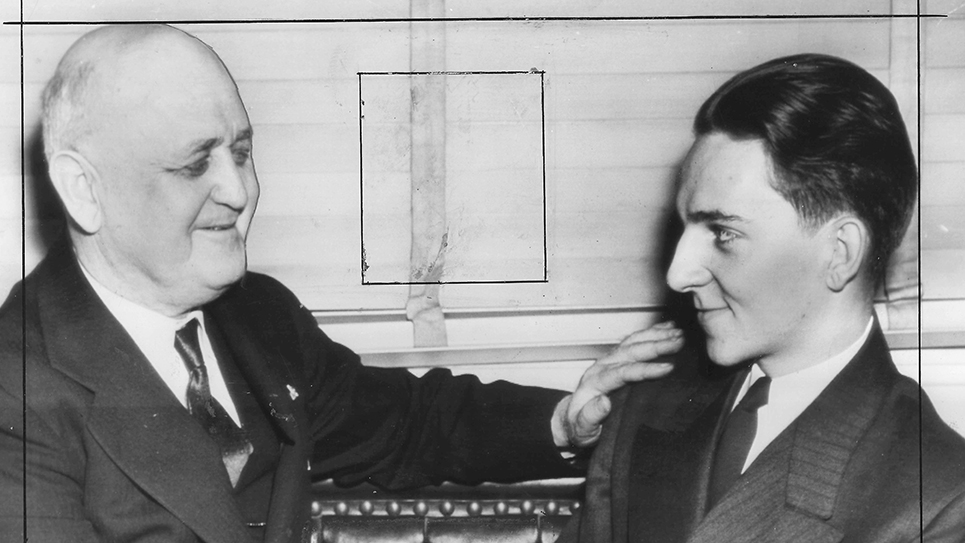It’s hard to be objective about yourself. This is why doctors and patients are advised to seek medical help rather than treat themselves. However, let’s be honest: we all prescribe for ourselves for minor issues.
If my memory serves me correctly, I once wrote a story about the scientific method and how doctors think. The ancient Greeks were the first to apply observational reality. Instead of imagining the world around them as caused by magic or the intervention of gods, they applied careful observation and then used logic to discover how things work.
These days we are bombarded with information. Just recently a patient asked me about the latest diet advised by Dr. Oz. Another asked me if cinnamon would really cure his diabetes as suggested by a commercial. And as I drove home to write this essay, an infomercial recommended “Dr. Block’s Super Food,” which is said to contain “50 different organic vegetables and fruits” all in a condensed capsule formulation which will restore vigor and promote weight loss. This particular product did not purport to improve a man’s virility as so many others have.
I was sharing my own aches and pains recently with a patient and he recommended Mega Red joint care. He averred that it had really helped his joint pain. I told him that I was glad his knee pain was better, but the scientist in me was skeptical. I thought it was more likely that his weight loss had helped his knee pain.
It must have been a weak moment or the rainy day that was making my knee pain worse, because I found myself in the nutraceutical section of my local drugstore. I was there to pick up a prescription, but as I waited I decided to look up the ingredients of Mega Red. Aside from the “proprietary ingredients,” the formulation contained krill oil and hyaluronic acid, a constituent of cartillage. About a decade ago a flurry of medical papers extolled the virtues of chondroitin sulfate and glucosamine. Though later clinical studies cast doubt on the claims of the original findings.
Hyaluroic acid, chondroitin and glucosamine are all building blocks of the cartilage that covers the endplates of bones. Our earlobes are similarly made of cartilage, and it is easy to imagine how the spongy nature of this material cushions our knee joints. Cartilage is naturally smooth, and most of us have observed the smooth aspect of the head of a soup bone. It is known that degenerative arthritis (osteoarthritis) is caused, not by a bone abnormality, but by a deterioration of the cartilage that covers joints like the knee. The hypothesis was that by ingesting the building blocks of cartilage the damage could be repaired and arthritic pain would decline.
It never made sense to me how you could swallow a pill of chondroitin/glucosamine or hyaluronic acid and have these substances find their way to a diseased knee. Nonetheless, early studies showed that those people taking significant doses of these formulations had less joint pain. It is interesting that similar proteins obtained from a rooster’s comb and then injected into an arthritic joint improves pain, though recent studies have cast doubt on the effectiveness of these joint injections as well. Perhaps the injections work in a way similar to resurfacing a pock marked driveway. However, resurfacing cannot repair potholes!
These thoughts flashed through my mind as I studied the Mega Red formulation. I decided to run my own pseudo-scientific experiment using Becky and me as guinea pigs. Medical science works best with the results of prospective, randomized, double blinded, placebo-controlled medical studies. In this type of study design neither the patient nor the doctor knows who is taking the study drug or a placebo which is determined by random assignment. The best I could manage was to quantitate our knee discomfort and then use Mega Red for several weeks before reevaluating the pain in our knees. We also plan a followup two-week trial without the nutraceutical. I’ve recommended this same internal study design for patients who want to try chondroitin/glucosamine. I would add one caveat to this protocol: count your pills when you come home from the drug store. Mega Red shorted us!
You may have heard of the recent sensational study from Northwestern University regarding regular or casual use of marijuana. The research study which appears in the Journal of Neuroscience showed that daily marijuana or even twice a month usage was associated with impairment of “working memory.” This study used a sophisticated MRI brain scanning technique and showed that two areas in the brain associated with “emotions, making decisions, and motivation” were structurally abnormal in those who use marijuana. Furthermore, heavier usage of marijuana was associated with even greater abnormalities.
For me it is troubling that two states have legalized recreational use of marijuana. There seems to be some scientific evidence for medicinal use of marijuana in association with cancer and possibly chronic pain syndromes. There are no studies that show the safety of recreational use of marijuana and it seems premature for our country to legalize this otherwise controlled substance. It troubles me to think or deeply inhaling any partially combusted (burned) plant fiber, since we know that inhaling tobacco smoke (another partially combusted plant leaf) is carcinogenic. And now science raises the specter that the use of marijuana causes structural abnormalities of the brain as well as memory problems and the so called amotivation syndrome.
A lot is said these days about athletes being role models. Given these new scientific findings, should our President (who was a heavy user of marijuana) and Eric Holder (head of the Justice Department) be supporting legalization of marijuana?
John Adams, another president of the United States, once said, “Facts are such troublesome things.” Are you listening Mr. President?






